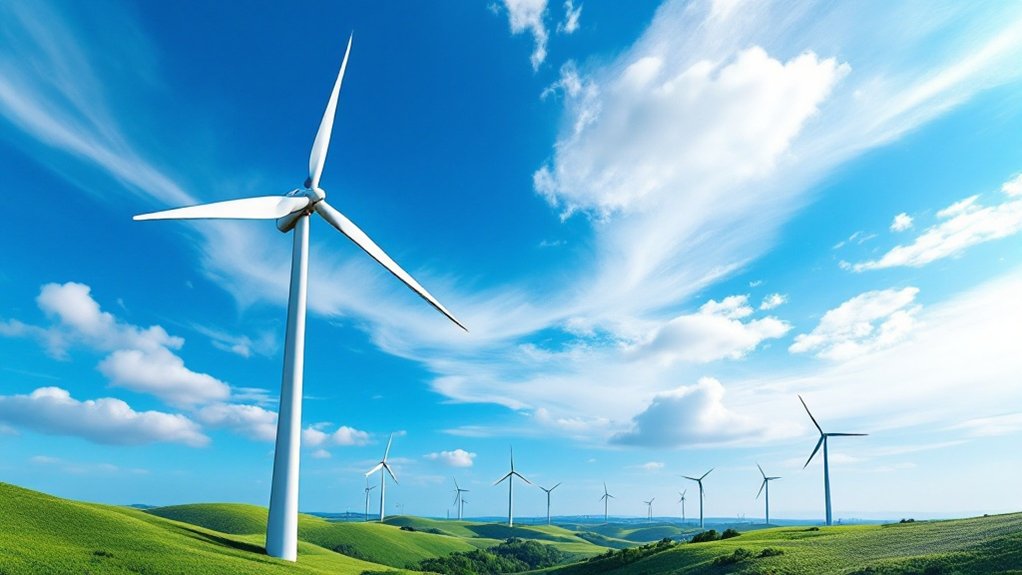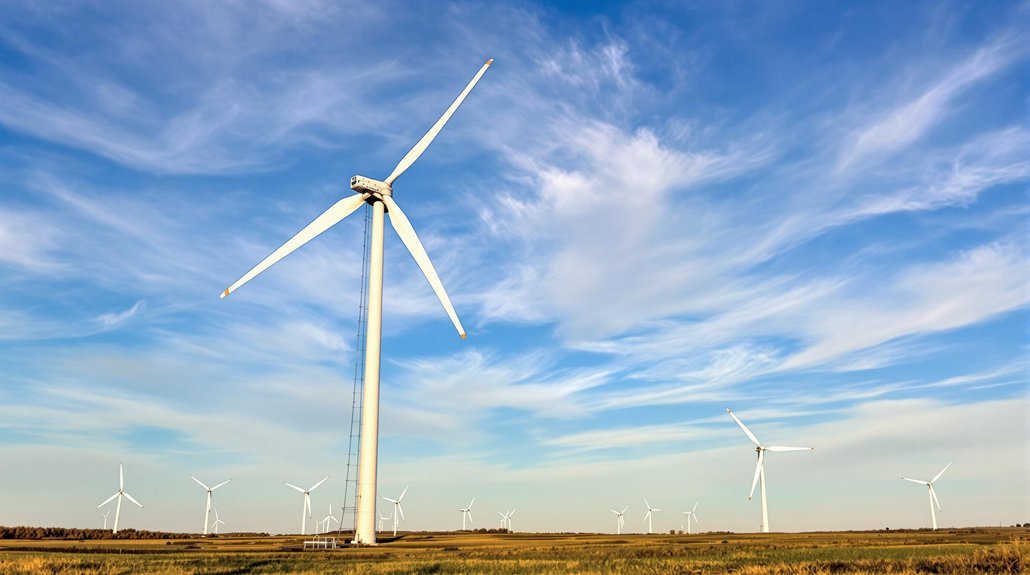Horizontal wind turbines are the workhorses of renewable energy, transforming wind into electricity with their massive three-blade design. These giants convert up to 50% of wind energy into power, enough to light up 1,500 European homes per turbine. Standing tall and proud, they’re not exactly DIY-friendly – installation requires specialized equipment and serious planning. Their proven reliability makes them the go-to choice for large-scale wind farms, though some neighbors aren’t exactly thrilled about their new skyline companions. There’s more to these engineering marvels than meets the eye.

While solar panels might get all the glamour these days, horizontal wind turbines are the true workhorses of renewable energy. These engineering marvels convert a whopping 40-50% of wind energy into electricity, leaving their vertical-axis cousins in the dust.
Let’s be real – when you can power over 1,500 European households with a single turbine churning out 6 million kilowatt-hours annually, you’re not just playing around with renewable energy. You’re revolutionizing it.
The anatomy of these giants is surprisingly straightforward, yet brutally effective. A rotor with aerodynamic blades catches the wind, while the nacelle houses the critical components like the generator and gearbox. The whole setup sits atop a towering structure that would make most architects jealous. The propeller design mimics an aerofoil shape to maximize wind energy capture.
And yes, these babies can spin around to face the wind, thanks to their yaw system. Pretty neat, right?
Modern offshore turbines are absolute monsters, reaching capacities of 12-15 megawatts. That’s enough power to make your neighborhood nuclear plant nervous. These turbines perform best in nearshore areas due to the temperature differences between land and ocean.
But all this impressive technology comes with its share of headaches. Try moving these colossal structures down a highway – it’s about as easy as threading a camel through a needle’s eye. And the installation? Let’s just say it’s not your average DIY weekend project.
These turbines aren’t perfect neighbors either. Some folks complain about the noise, others about the views. And radar systems? They’re not exactly best friends. The technology provides economic benefits through job creation and income for landowners who host the turbines.
But here’s the kicker – when it comes to large-scale electricity production, horizontal wind turbines are simply unmatched. They’re reliable, well-understood, and they access stronger winds at higher altitudes like nobody’s business.
From sprawling onshore wind farms to massive offshore installations, these turbines have proven themselves time and again. They’re even finding their way into hybrid systems with solar panels and storage solutions.
For all their quirks and challenges, horizontal wind turbines remain the heavyweight champions of renewable energy generation. No contest.








